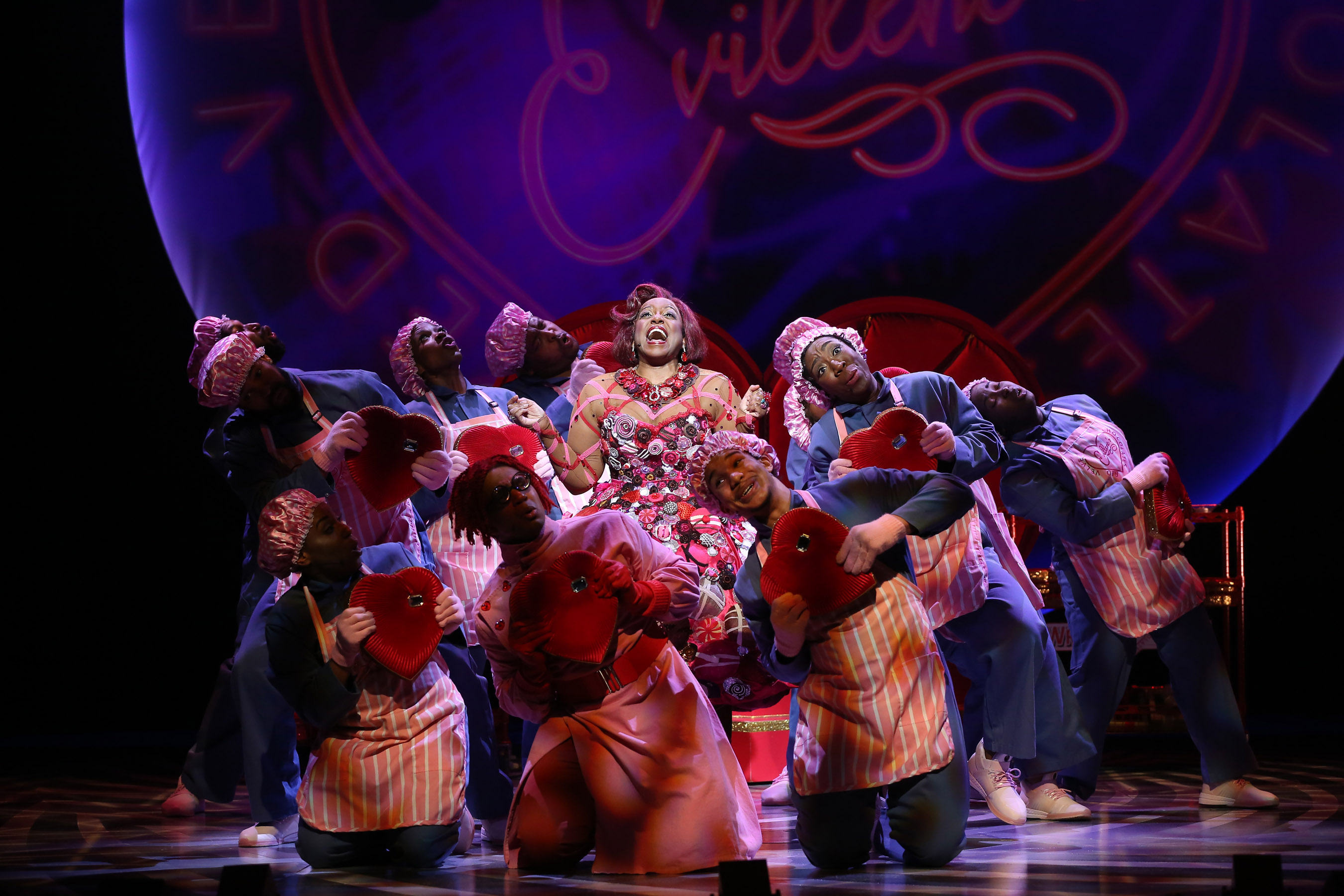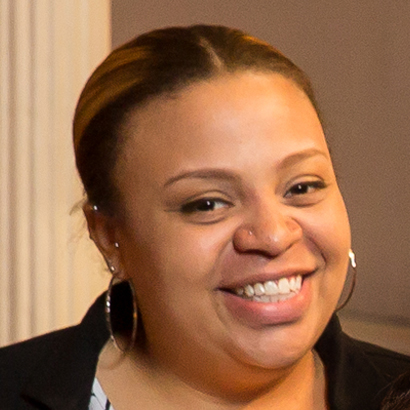
The Wiz: Universal Story and Cultural Masterpiece
We are still easing on down the yellow brick road here at Ford’s as we approach the end of what has, so far, been an amazing run of The Wiz. The story of Dorothy and her friends continues to delight audiences of all ages.
I spoke with Dr. Dwandalyn Reece, Curator of Music and Performing Arts at the Smithsonian’s National Museum of African-American History and Culture (NMAAHC) about the artifacts from the original Broadway production of The Wiz that are on display at the museum and why she feels the story of Dorothy and her friends is still important today.

Plus, we discovered that Dr. Reece and Director Kent Gash grew up in the same area! She remembered him from her youth as one of the older students she would see around Colorado. Small world!
NMAAHC has several artifacts from The Wiz’s original Broadway production, including several costumes. Could you describe the costume pieces you have on display? What materials were used? What is most interesting about the costumes to you?
Dr. Reece: Okay! I’m going to see if I can do this off the top of my head. We have several costumes that were collected as part of the Black Fashion Museum. The original costumes were, of course, designed by Geoffrey Holder and what we have is a dress for Dorothy, the Tinman and Glenda’s Dress and some smaller pieces as well. I know in the design, from Geoffrey Holder’s perspective, he was really looking at The Wiz as kind of a folk opera and drawing upon the roots of African culture and his own experiences growing up in the Caribbean. Take the Tinman for example, (made) of scraps and junk and it speaks to the urban climate and that urban experience.
Andre Deshields, who played the original Wiz on Broadway, just donated several costumes that he wore in the show, so we now have that in the collection as well. The fabulous colors and combinations really speak to Caribbean flavor in a lot of ways, but it’s really that (Holder) looked at it as a really down-to-earth folk interpretation of what that experience is about. Really getting to the roots of not only African, but African-American culture, the communities people lived in and the things that have nurtured them over time. If you look at the costumes on a broad scale—I think they should be taken as whole not just as individual items—you really get that sensibility of the mood of the piece and the ethos of what he is trying to evoke by reinterpreting this timely classic story.
How do these items fit into the Culture galleries at the museum and why did the museum want them on display?
Dr. Reece: Theatre is part of the cultural story. I think The Wiz is a part of a movement in theatre, particularly in the ’70s, where you saw this creative explosion of shows. You had Eubie!, you had Jelly’s Last Jam, Raisin, and a creative explosion on Broadway with African-American presence in all kinds of shows. The Wiz was one of many. That is something that we, as museum professionals, are very interested in looking at the history of theatre and looking at theatre as cultural expression. If you dig down deep, which is what I said about Geoffrey Holder and the elements of the show, from costuming to staging to the music, all of that really speaks to a unique experience that really tells something from a different perspective.

Tell me about the music of The Wiz. Why is it so important?
Dr. Reece: Music speaks to where we are at any given time in its sensibilities. The Wiz was tied in to what was going on musically with the rest of the culture. I think of the work of Charles Smalls and you can’t forget Luther Vandross, who wrote “Everybody Rejoice,” which, when you think about it, sounds like a Luther Vandross song. It’s all those elements that make a seamless whole and works so well as a lens into what the African- American experience is like.

Tell me about Afrofuturism.
Dr. Reece: I see Afrofuturism as a burgeoning movement, kind of post 1968, 1970s. It’s a sign of creativity but also a new sign of liberation and (way of) seeing the world, movement and other imaginings of possibilities. If you think about it, post-1968 with some of the successes of the Civil Rights Movement and (discussion of) “where do we go next?” people are thinking about another plane, they are thinking of reimaging new ways to liberate themselves, and of a greater sense of humanity. (Afrofuturism) is part of that principle of civil rights and liberation and freedom.
I think of George Clinton, I think of Sun Ra, I think of— we’ve got a costume from Nona Hendryx— Labelle, Earth Wind and Fire, I think of their music and the images they are trying to provoke. (It’s a tie) to their African roots while imagining a different future for people of African descent that hadn’t existed up until that time. With (the movement’s) creativity and imagination, you reach new levels of self-expression, costuming, musical exploration. It’s a really powerful movement for those who take it to heart and it’s still continuing in the work of so many other people. It challenges us and keeps us on our toes.
How do you think The Wiz fits into the Afrofuturism movement? How does it influence contemporary culture today?
Dr. Reece: It’s interesting, I never really linked The Wiz to Afrofuturism but certainly the players involved are involved in it. I think it is, firstly, a reimagining of The Wonderful Wizard of Oz itself. The story is taking the experience of Dorothy and going to another world to seek something that has to be better than what she has already, or so she thinks. If you take that metaphor and stretch it, its reinventing what the story’s message means from an Afrocentric perspective. The story is still the same, but the meaning seems to shift in a lot of ways. It’s all about possibility, it’s all about staying true to your roots.
When you think about Afrofuturism and break it down to afro and future, you see it’s rooted in African identity, which is core to The Wiz, to this retelling. Even though (the original creators of The Wiz) weren’t necessarily intending, “I’m going to do an Afrofuturist show,” it’s a sensibility that starts to spread among artists and people and the way that they are expressing themselves.
When did you first encounter The Wiz? What do you remember about the experience?
Dr. Reece: I saw it when I was 10 years old. My mother took my brother and me. The message of female empowerment was a very strong message for me as a child watching it. Having a story centered on a young black girl was so important. I always gravitated toward strong female characters, wherever I could find them because most stories were about boys or men. I watched Little House on the Prairie or The Bionic Woman but always had to kind of reimagine myself in those spaces. The Wiz was not a reimagination, it was real. I think there is a sense of possibility when you can see yourself as centered and not marginalized in a way that you would see in the broader culture. I think for a lot of people, African American and people of color growing up, there was always that tension and a desire to seek out those spaces.

As the next generation comes to see the Ford’s production and the artifacts at NMAAHC, what do you hope they walk away with?
Dr. Reece: I hope they walk away with the idea that art is just so much more than entertainment. It’s a reflection of how we communicate with each other, it’s our identities, it’s the way that we live our lives. I hope they think about this as more than a great show or dancing, or singing, but to really interpret it and think about how it reflects who we are; how it helps us to communicate with each other. Art builds societies. The whole communal experience of enjoying this show together is what all of this is about . You’ve got to have performers and the audience so that these collective experiences of sharing stories and histories and cultures are really a way of binding us together in our common humanity. It is very important to me to make sure that people can tease out these elements and create access and really be moved and touched and understand what they are taking in and walk away with. To understand that they have not necessarily gone to an African-American show, but that they’ve seen a human story. So, simple as that.
The Ford’s production of The Wiz plays until May 12. If you are in D.C. and interested in learning more about Afrofuturism and The Wiz, please join us for our related post-show discussions on May 1 and May 8.
Erika Scott is Artistic Programming Manager and could be classified as a #Ford’sWiz Super Fan. Follow her on twitter at @Musiqal_onE.

